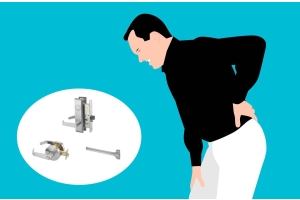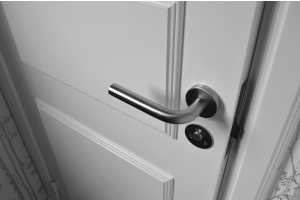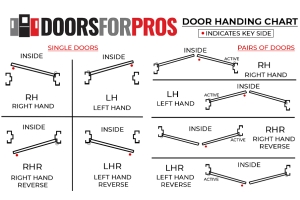Cookies help us deliver our services. By using our services, you agree to our use of cookies. Learn more
Preserving Facility Security: A Facility Manager's Guide to Maintaining Locks and Hardware
Conner Mulrooney

As a facility manager, ensuring the safety and security of your property is paramount. One crucial aspect of facility security is the maintenance of locks and hardware. Proper maintenance not only prolongs the lifespan of locks and hardware but also ensures their reliable performance in safeguarding your facility and its occupants. In this article, we'll explore the key considerations and best practices for maintaining locks and hardware to preserve facility security and enhance operational efficiency.
1. Conducting Regular Inspections: Start by conducting regular inspections of all locks and hardware throughout the facility. Look for signs of wear and tear, damage, or malfunctioning components. Pay close attention to door locks, hinges, handles, closers, and other hardware that are essential for securing entry points and controlling access.
2. Lubricating Moving Parts: One of the most critical aspects of lock maintenance is lubricating moving parts to ensure smooth operation. Use a high-quality lubricant to grease hinges, latches, bolts, and other components susceptible to friction. Regular lubrication prevents corrosion, reduces wear, and extends the lifespan of locks and hardware.
3. Tightening Loose Hardware: Check for loose screws, bolts, and other fasteners on locks and hardware. Tighten any loose hardware to ensure a secure fit and prevent potential security vulnerabilities. Consider using thread-locking adhesive to secure fasteners in place and prevent them from loosening over time.
4. Repairing or Replacing Damaged Components: Address any damaged or malfunctioning components promptly to maintain the integrity of locks and hardware. Repair or replace broken locks, hinges, handles, and other hardware as needed to restore functionality and security. Consider investing in high-quality replacement parts to ensure long-term reliability and performance.
5. Upgrading Security Features: Periodically assess your facility's security needs and consider upgrading locks and hardware to incorporate advanced security features. Look for options with anti-pick cylinders, reinforced strike plates, and other enhancements to enhance protection against forced entry attempts. Stay informed about the latest security technologies and industry trends to keep your facility ahead of potential security threats.
6. Training Maintenance Staff: Provide comprehensive training for maintenance staff on proper lock and hardware maintenance procedures. Ensure that staff members understand how to identify common issues, perform routine maintenance tasks, and address minor repairs. Empower maintenance staff to take proactive measures to preserve facility security and prevent security breaches.
Conclusion: Maintaining locks and hardware is essential for preserving facility security and ensuring the safety of occupants and assets. By conducting regular inspections, lubricating moving parts, tightening loose hardware, repairing or replacing damaged components, upgrading security features, and training maintenance staff, facility managers can uphold the integrity of locks and hardware and enhance overall facility security. At DoorsForPros.com, we offer a wide range of high-quality locks and hardware solutions to meet your facility's security needs. Explore our selection today and take the first step toward preserving facility security with confidence.
This article provides facility managers with valuable insights and practical tips for maintaining locks and hardware to preserve facility security and enhance operational efficiency. By addressing key considerations such as regular inspections, lubrication, hardware tightening, repairs or replacements, security upgrades, and staff training, DoorsForPros.com positions itself as a trusted partner for facility security solutions.







